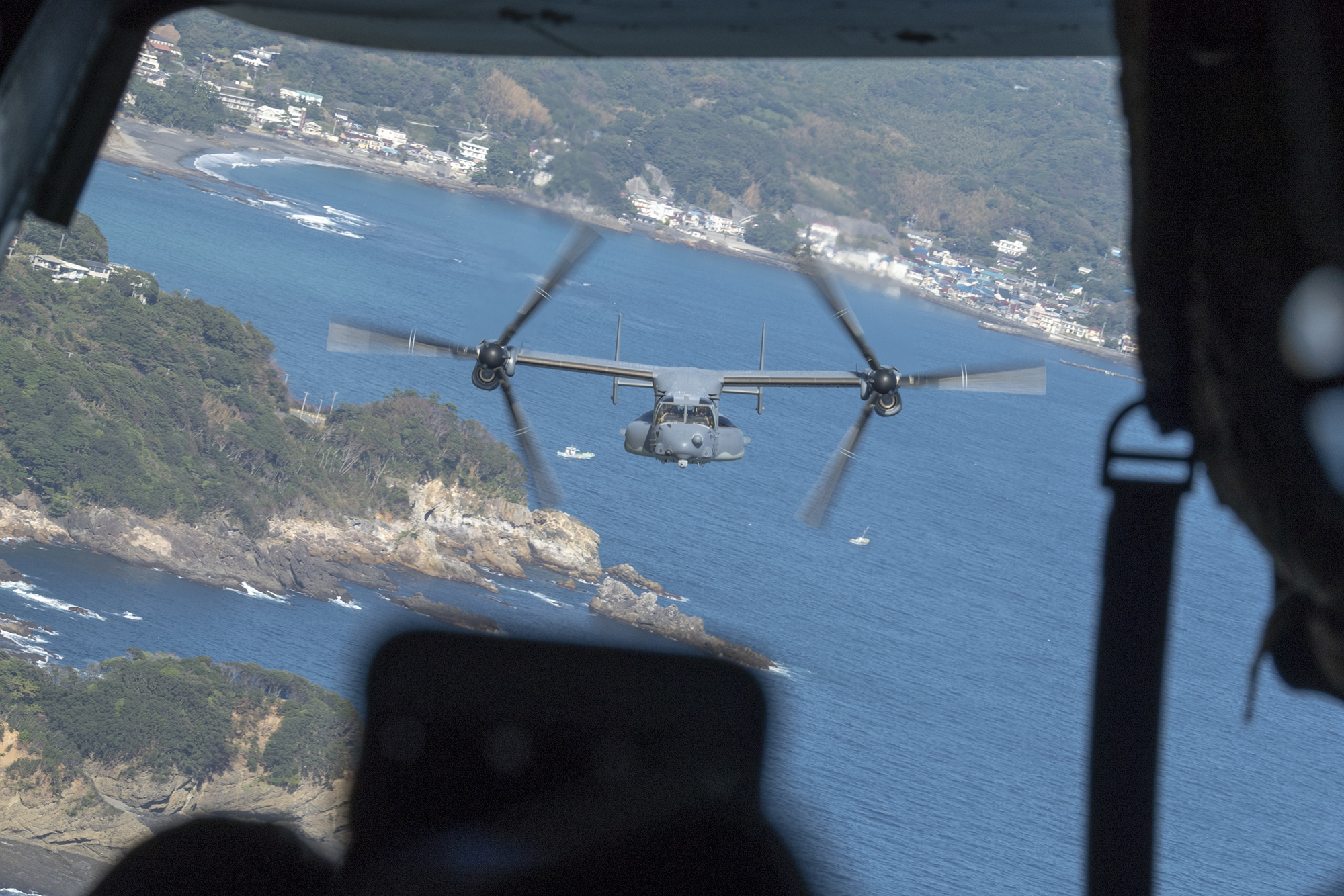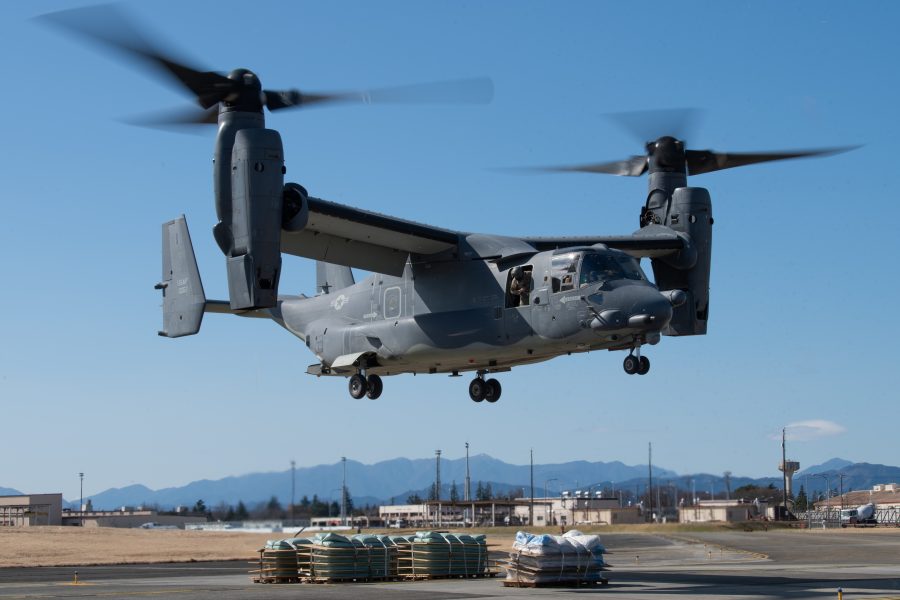Yokota Air Base will not fly its CV-22 Ospreys in a joint training exercise between U.S. and Japanese forces starting this weekend.
The decision comes four months after the fleet-wide grounding of the Osprey was lifted in March. Naval Air Systems Command and Air Force Special Operations had halted operations of some 400 V-22 variants across the Air Force, Navy, and Marine Corps for three months following a fatal accident in November that killed all eight Airmen aboard a CV-22 Osprey that crashed off the southern coast of Japan.
“The 21st Special Operations Squadron made the determination to focus on internal training requirements, and consequently withdraw their CV-22B participation in Exercise Resolute Dragon 24.” Capt. Richard Caesar, a spokesman for the 353rd Special Operations Wing, told Air & Space Forces Magazine on July 25.
The 21st Special Operations Squadron originally planned to support casualty evacuation training with U.S. and Japan Self-Defense Force units in the exercise, scheduled from July 28 to Aug. 7, as well as participate in “joint and bilateral V-22 unit engagements,” Caesar added. The squadron’s Ospreys took flight at Yokota for the first time since the crash in November earlier this month.
“The safety of the flying crews and Japanese neighbors remains our number one priority,” said Capt. Caesar.

The exercise will still include eight U.S. Marine Corps Ospreys and two Japanese Self-Defense Force MV-22 Ospreys, according to the Japan Times. The V-22 Osprey family variants include MV-, CV-, CMV-, and Japanese MV-. Japan was the first international customer for the Osprey, receiving its first aircraft in 2020. The country’s defense ministry also briefly halted its Osprey operations following the accident on Nov 29.
As of now, the timing of the Yokota CV-22 Osprey unit’s next exercise with local Japanese troops remains murky.
“The 21 SOS is currently focused on the safe completion of the final phase of our return to flight plan, which will include resumption of full mission profiles,” said Caesar, adding that multilateral exercises, operational taskings, and deployments of the Osprey aircraft will follow after that. For the time being, the aircrews are focused on “expansion to full mission currency and proficiency” during their internal training.
“Maintainers have remained engaged in conducting routine maintenance and receiving training in line with the maintenance protocols directed by the Naval Air Systems Command return-to-fly bulletin,” said Caesar.
The Pentagon has been carefully easing the Osprey variants back into action since March.
Last month, Vice Adm. Carl Chebi, head of Naval Air Systems Command testified that the aircraft has not been deemed “entirely safe.” He described the November accident as a “catastrophic material failure that we have never seen before in the V-22 program,” without identifying the defective part of the aircraft.
“I will not certify the V-22 to return to unrestricted flight operations until I’m satisfied that we have sufficiently addressed the issues that may affect the safety of the aircraft,” Chebi said during a House Oversight Committee hearing last month. “Based on the data that I have today, I’m expecting that this will not occur before mid-2025.”
Meanwhile, lawmakers are growing frustrated with the Pentagon over the Osprey program. The CV-22 crash in November marked the fourth deadly Osprey crash in just over two years and prompted the House Oversight Committee to launch its own investigation of the aircraft.
Last week, committee chair Rep. James Comer (R-Ky.) and national security subcommittee chair Rep. Glenn Grothman (R-Wis.), reiterated their request for key documents related to Osprey accidents from the Pentagon, which was initially made in December. They threatened to consider measures like subpoenaing the department if the information is not provided by the end of this month.
Following that, three Massachusetts lawmakers also called the decision to resume the tiltrotor’s flight in March “premature,” urging the Pentagon to ground the V-22 Osprey again “until the root cause of the aircraft’s many accidents is identified and permanent fixes are put into place.”
In a letter signed July 18, Sen. Elizabeth Warren (D-Mass.), Sen. Edward Markey (D-Mass.), and Rep. Richard Neal (D-Mass.) requested answers from the Pentagon about the Osprey’s full review, the roles of the two manufacturers, Bell Textron and Boeing, in that review, and further details on Class A mishaps involving the aircraft by Aug. 1.
